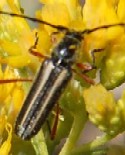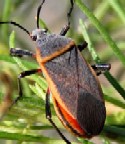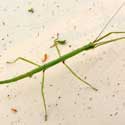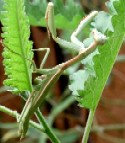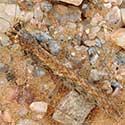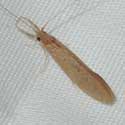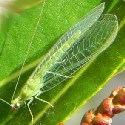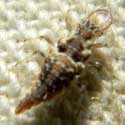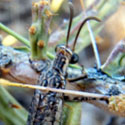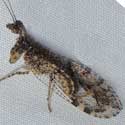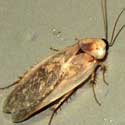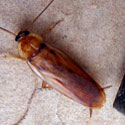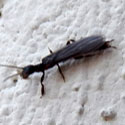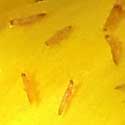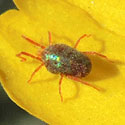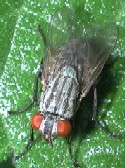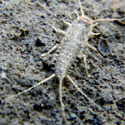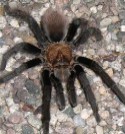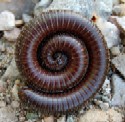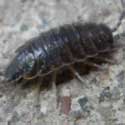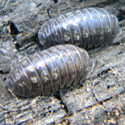Invertibrate animals with an exoskeleton and a segmented body. Includes
insects, spiders, crustaceans, scorpions, millipedes and centipedes. Thousands
upon thousands of species - a nature lovers cornucopia of diversity and
intrigue.
Dragonflies & Damselflies
Odonata
Four, similar membraneous wings, with often rapid and precise flight. Adults
and immatures are entirely predaceous. Immature stages live in water but adults
can wander far from water in search of prey.
More info
|
Butterflies
Lepidoptera
Day flying insects with four, broad, often colorful wings. Immature form are
caterpillars feeding on plant leaves.
More info
|
Moths
Lepidoptera
Often nocturnal but not always. Four broad wings with drab or else colorful
scales.
More info
|
Beetles
Coleoptera
One pair of hardened wing covers protecting a second pair of membraneous flight
wings. Mouthparts designed for chewing. Immature stage a grub.
More info
|
True Bugs
Hemiptera
Insects with two pairs of wings and mouthparts designed for piercing-sucking.
First pair of wings may be part leathery. Many forms are wingless.
More info
|
Walking Stick
Diapheromeridae
Unlike a praying mantis, the first legs are slender and not armed with sharp claws. Eyes small.
More info
|
Praying Mantis
Mantidae
First pair of wings are leather, second membraneous. First pair of legs
strongly raptoral and sharp clawed. Predaceous on mostly soft-bodied insects.
More info
|
Ground Mantis
Litaneutria minor
Small praying manitises that hide in plain site by looking just like the sand they are sitting on!
More info
|
Caddisfly
Leptoceridae
The wings, which are held tent-like over the body, are covered with short, soft hairs. Usually not found far from water.
More info
|
Green Lacewing
Chrysopa
Delicate, intricately veined wings, often emerald green. Mostly nocturnal at
lights or alighted on vegetation. Larvae eat aphids, etc.
More info
|
Lacewing Larva
Chrysopa
The Aphid Lion. Small torpedo-shaped, somewhat compressed insect without wings. Eat aphids,
etc. and on rare occasion will bite into flesh in search of moisture.
More info
|
Ant Lion
Neuroptera
Delicate, intricately veined wings, largely nocturnal. Drab gray or brown for
hiding by day. Conspicuous antennae which dragonflies lack.
More info
|
Mantidfly
Plega
Delicate-looking insect with a pair of lethal weapons: Raptorial prothoracic legs.
More info
|
Desert Cockroach
Balaustium
Pale tan cockroach adapted to desert conditions. Comes to porch lights but never lives in people's homes.
More info
|
Turkestan
Cockroach
Blattoidea
Slender, light brown cockroach inhabits lawns and gardens. Capable of weak
flight. Introduced amd Non-native.
More info
|
Black Webspinner
Embiidina
Mostly seen at lights are the winged males. Females and immatures live in
silken tubes under leaves/rocks in moist gardens.
More info
|
Stonefly
Plecoptera
Aquatic insect of cool, clean, streams. Elongate abdomen with two long,
hair-like tail append-ages. Adults emerge early spring.
More info
|
Flower Thrips
Thripidae
On close inspection most blooming flowers have minute (< 1 mm) cigar-shaped
insects. Most are pale yellow, but there are black species also.
More info
|
Pavement Mite
Balaustium
Bright red mites a bit smaller than 2mm often seen running against white
concrete or on flowers.
More info
|
Flies
Diptera
One pair of membraneous wings. Mouthparts designed for lapping or
piercing. Immature stage is a maggot. Includes gnats and mosquitoes.
More info
|
Grasshoppers and Crickets
Orthoptera
Saltorial insects with two pairs of wings, the first, top pair often leathery
and protective. Chewing mouthparts. Immatures lack wings but resemble adults.
More info
|
Bees and Wasps
Hymenoptera
Two pairs of membraneous wings - second pair normally smaller than first.
Buzzing, high-frequency wing beats. Stinger often present. Mouth parts
chewing-lapping.
More info
|
Ants
Hymenoptera
Workers without wings and normally residing in large colonies. Reproductives
(queens, males) with two membraneous wings. Stingers sometimes present.
More info
|
Creosote Bush Walkingstick
Diapheromera covilleae
Wingless insect with six legs and attaining a large size greater than 8 cm. Body and appendages are all long and twig-like
to hide completely.
More info
|
Desert Subterranean Termite
Heterotermes aureus
Mud-like carton tunnels extend from soil up into wooded structures. White
abdomen with darker brown at mandibles in head.
More info
|
Encrusting Termites
Gnathamitermes perplexus
Rarely seen directly above ground. Twigs and grasses near soil are encrusted
with mud-like carton.
More info
|
Firebrat
Thermobia domestica
Common household insect in the Sonoran Desert. Three long hair-like appendages
at tail and two long antennae. No wings.
More info
|
Spiders
Arachnida
Eight segmented legs and a body with two segments - head and thorax fused. May
inhabit an intricate web or hunt freely. Without antennae.
More info
|
Scorpions
Arachnida
Eight legs with a prominet pair of pedipalps at anterior formed to pincers.
Tail or telson normally with sting at posterior.
More info
|
Desert Millipede
Orthoporus ornatus
Two pairs of legs per each of many body segments. Habitat mostly subterranean
and above ground only at night after rain.
More info
|
Greenhouse Millipede
Oxidus gracilis
Again, two pairs of legs per segment. Common millipede in moist gardens of
Sonoran Desert. Mostly hidden beneath vegetation or debris or soil.
More info
|
Desert Centipede
Scolopendra polymorpha
Many segments and legs, but with only one pair per segment. Nocturnal. By day
remains hidden beneath rocks or soil.
More info
|
Woodlouse
Porcellio sp.
Terrestrial crustacean found mostly in watered gardens and compost. 7 pairs
legs. Flattened profile.
More info
|
Common Pill-Bug
Armadillidium
Not a bug or insect at all! Curls into tight ball. Lives among damp leaves and
under logs.
More ...
|
The Sonoran Desert Naturalist uses third party advertisements to partly support
this educational web site. Some of these advertisers may use technology such as
cookies when they advertise here, which will send these advertisers (such as
Google through the Google AdSense program) information including your IP
address, your ISP , the browser you used to visit our site. This is generally
used for targeting purposes (showing California real estate ads to someone in
California, for example) or showing certain ads based on specific sites visited
(such as showing travel ads to someone who frequents tourist web pages).



